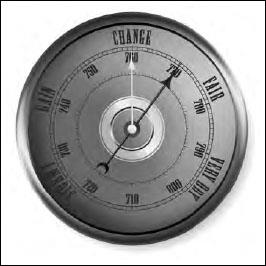FluidsAtmospheric Pressure |
What are the bends? |
Nitrogen under normal atmospheric pressure is nearly insoluble in blood. Under pressure, the solubility increases. Thus, as a diver goes deeper the blood holds more and more nitrogen, which dissolves in the blood during gas exchange in the lungs. As the diver ascends, the pressure decreases, and hence the blood is now supersaturated with nitrogen. The supersaturated nitrogen forms bubbles as it comes out of solution in the blood, or cells. These bubbles collect in veins and arteries. They cause pain, and can rupture cell walls and block the flow of blood to cells, causing injury or even death.
The best way to avoid the bends is to rise to the water surface slowly, allowing the liquid pressure from the water to gradually decrease and prevent any physical damage. Most scuba divers use “nitrox” that contains 35% oxygen and 65% nitrogen (rather than normal air that contains 20% oxygen and 80% nitrogen) to reduce, but not eliminate the possibility of getting the bends.

